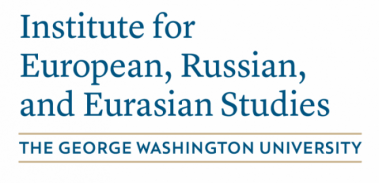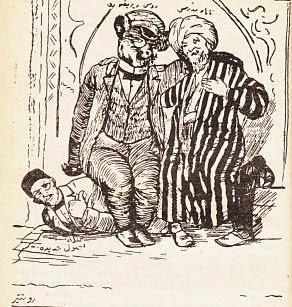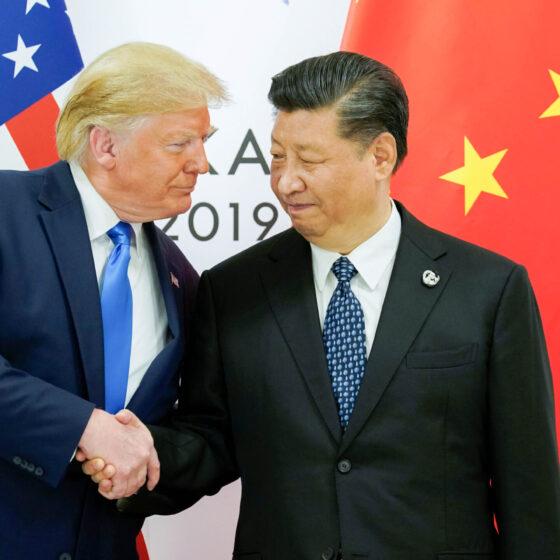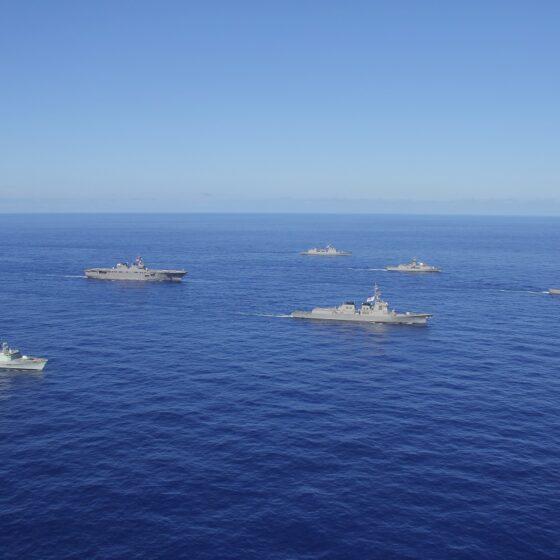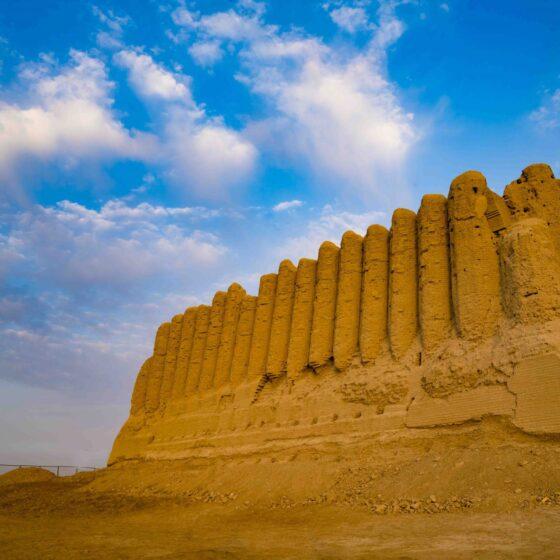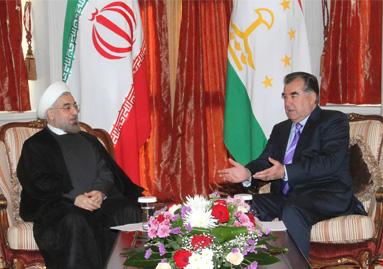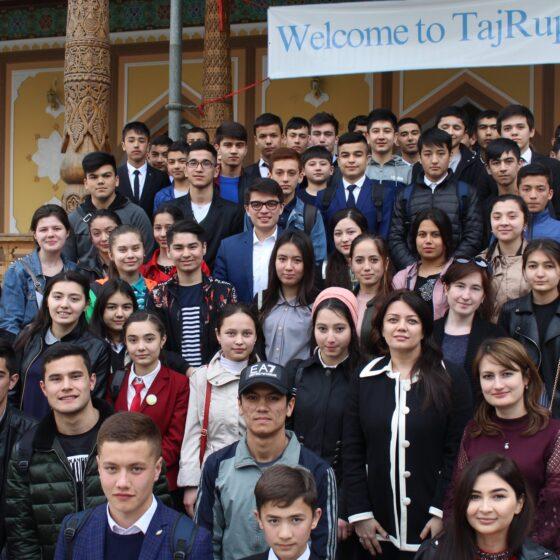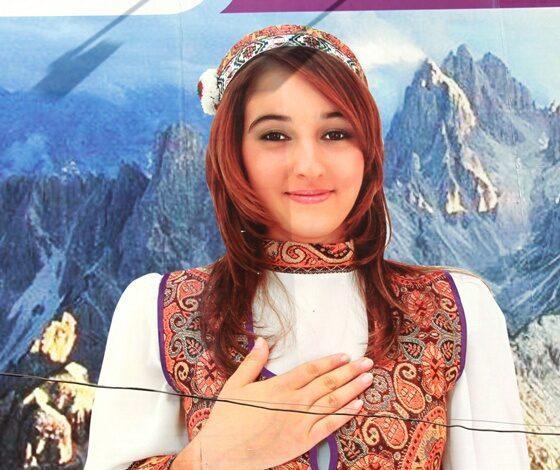CAA Network has interviewed Ahmet Kuru, professor of political science at San Diego State University, who analyzes the problems of authoritarianism and socioeconomic underdevelopment in 50 Muslim-majority countries. Kuru’s book on this topic, Islam, Authoritarianism, and Underdevelopment: A Global and Historical Comparison (Cambridge University Press, 2019), won two academic awards. The book has been translated or is in the process of translation into nine languages. This interview will be the first Russian coverage of Kuru’s book.

Could you explain what the ulema-state argument means in Muslim-majority societies? Does your argument focus on the Middle East and North Africa? The concept of the ulema-state alliance seems to be not directly relevant to the secular states of Central Asia. What do you think?
Many thanks for this interview which will give me a chance to present my book to readers in certain parts of Eurasia, particularly Central Asia. As a region, Central Asia played a pivotal role in Muslims’ golden age of science and economy between the ninth and eleventh centuries. My book elaborates this period by explaining how Farabi, al-Khwarizmi, Ibn Sina, Biruni, and other Muslim polymaths made cutting-edge contributions to philosophy, mathematics, medicine, optics, and various other fields of science. During this golden era, Muslim societies also had a dynamic class of economic entrepreneurs, who conducted intercontinental trade and developed financial institutions, such a check and bill of exchange. When Muslims were progressive, Western Europe was scientifically and economically backward.
My book emphasizes two characteristics of scientific and economic development that took place between the ninth and eleventh centuries in Central Asia, the Middle East, and North Africa. First, this development was made possible by the joint efforts of people with various religious backgrounds: Sunni Muslims, Shia Muslims, agnostics, Christians, Jews, etc. Muslims were dominant but they were cooperating with and learning from others. Second, during this period, there was a certain degree of separation between Islamic scholars (the ulema) and state authorities. The overwhelming majority of the ulema, including such leading figures as Abu Hanifa, Malik, Shafii, and Ibn Hanbal, refused to be state servants. This religion-state separation substantially contributed to the philosophical dynamism of this golden age.
Nonetheless, after the eleventh century, a multi-level transformation began in Central Asia, Iran and Iraq. The economic crisis of that time caused the institutionalization of a state-centric system of land revenues distribution, the iqta system. Meanwhile the Abbasid caliphs in Baghdad, severely weakened by the rising Shiite powers, called for the unification of Sunni sultans and ulema. A part of this call, they declared certain Shia, rationalist theologians (Mutazilis), and philosophers as apostates who could be punished by death. This call was received by the newly emerging Turkish military force—the Seljuk Empire—that eventually dominated most parts of Central Asia, Iran, Iraq, and Anatolia. The Seljuks expanded the semi-feudal iqta system, which restricted the social roles of merchants, who had previously provided funding to independent Islamic scholars.
The Seljuk grand vizier, Nizam al-Mulk, filled the financial vacuum by founding a series of madrasas, the so-called Nizamiyyas. These madrasas helped the establishment of a Sunni orthodoxy by synthesizing formerly competing schools of jurisprudence and theology. They also served to produce Sunni ulama who would ally with the state against Shia and other “unorthodox” groups. Hence, what I called the “ulema-state alliance” emerged in the eleventh century in Central Asia, Iran, and Iraq under the Seljuks. From the twelfth to the fourteenth century, the Seljuk model of ulema–state alliance spread to other Sunni states in Syria, Egypt, and North Africa, particularly the Mamluk Empire.
Between the fifteenth and eighteenth centuries, the Ottoman, Safavid, and Mughal Empires established versions of the ulema-state alliances. These empires were militarily powerful, but they failed to revive early Muslims’ intellectual and economic dynamism because they eliminated philosophers and marginalized merchants. Moreover, they did not embrace printing technology for about three hundred years.
During the nineteenth and twentieth centuries, many reformists, who lived in the Ottoman Empire, Egypt, and colonized Muslim lands, acknowledged that the ulema-state alliance hindered Muslim societies’ development. Their reform attempts, however, became mostly unsuccessful for three main reasons. The first one is the ulema’s resistance. Ismail Gasprinski and other Jadids faced this resistance while trying to reform the educational system of Muslims in Tzarist Russia. The second reason was the colonization of the entire Muslim world. Without independence, you cannot truly achieve development. The third and final reason was the reformists’ policy mistakes. Even in independent countries, such as the late Ottoman Empire and Republican Turkey, reformists defended authoritarian modernization policies and replaced the ulema with the bureaucrats. These reformists did not truly encourage the emergence of an intellectual class or a class of economic entrepreneurs.
As you see, Central Asia is crucial for my analysis of early Muslim’s golden age, the post-eleventh century emergence of the ulema-state alliance, and modern reform attempts to challenge the influence of the ulema.
I agree with you that all five republics in Central Asia and Azerbaijan are secular states, where the ulema do not have legal roles. Yet, my analysis is still very relevant to these secular republics. My book recommends a system where political, religious, intellectual, and economic classes are able to operate autonomously, and none is able to dominate others. Such a system will produce creative intellectuals and dynamic economic entrepreneurs. These six secular republics, however, have state-centric systems. Their ulema are not independent; on the contrary, the ulema are state servants in almost all of these republics. Moreover, many of them have economic systems based on rents, particularly oil and natural gas revenues. Hence despite having secular regimes, these republics have neither a true religion-state separation nor a system where dynamic intellectuals and economic entrepreneurs can emerge.
You mentioned early Muslims’ scientific achievements. The issue of “Lost Enlightenment”—the title of Fred Starr’s book– is very dear for most Central Asians who regard many Muslim intellectuals of the past as their own. The intellectual decline since then is very often explained by the Mongol invasion. Some scholars though argue that even under the Mongols, there was substantial scholarly work done. What does your book tell us about the role of the Mongol invasion?
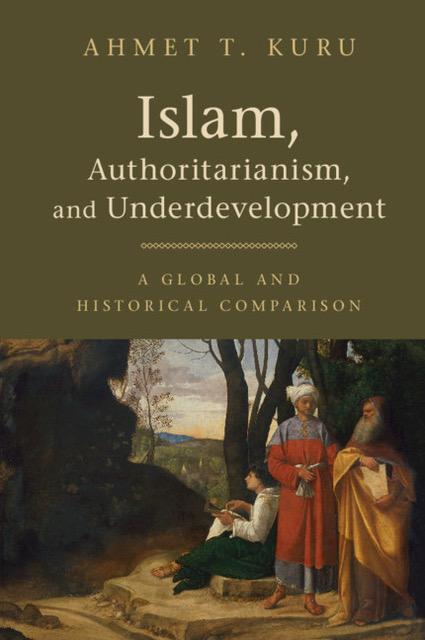
My book has a specific chapter analyzing the Mongol invasion and the Crusaders between the twelfth and fourteenth centuries and how they destroyed cities and killed a large number of Muslims. Both Mongols and Crusaders had contradictory impacts on the ulema–state alliance. On the one hand, the fall of most Muslim states, except the Ayyubids and then Mamluks in Egypt, and Berber dynasties in Morocco/Andalus, weakened this alliance. On the other hand, the perils of the Mongols and Crusades led many Muslims to seek safety from both the military state, as a possible protector against the invaders, and the ulema, as a provider of meaning to depressive conditions of invasions and massacres. Moreover, the Crusaders’ emphasis on “religious war” resonated with similar sentiments on the Muslim side, further empowering the ulema–state alliance.
As you emphasized, the Mongol invasion had also complex consequences for the economy and science. It provided Muslim merchants with some opportunities by politically unifying Eurasia. The Mongols also made some contributions to the natural sciences, for example, by patronizing the observatory in Maragha (Azerbaijan). Nonetheless, in general, both Mongols and Crusaders led to a deterioration of commercial and scholarly activities in many Muslim cities. The Mongol invasions were particularly damaging in their destruction of irrigation systems and promotion of nomadic pastoralism in Central Asia. In 1999, I visited Köneürgenç (Konye-Urgench) in Turkmenistan; people were still talking about the Mongol destruction of the city.
Fast-forwarding to modern times: You mentioned the Jadids under Russian rule. Central Asia, specifically Tatarstan, is an interesting example because of the intellectual and cultural influence of Russia. Yet with all singular individuals as Jadids in the early twentieth century and now with independent republics, Central Asia of modern times did not achieve much progress and is marked with corruption, poverty, lack of education, though maybe with less violence. What is the role of Russian colonialism in this situation? You specifically note in the book that you disagree with the argument that Western colonialism is a root cause of problems of Muslim societies colonized by the West. Do you find the advantages of colonialism as some see in the case of Central Asia? The Soviet Union (not imperial Russia) built schools, translated books, and provided universal access to universities. Was Western colonialism markedly different?
First of all, contemporary problems of authoritarianism and underdevelopment exist in not only Central Asia but also in all other regions of the Muslim world. Out of 50 Muslim-majority countries, only five are electoral democracies today. Muslim-majority countries also demonstrate lower levels of socio-economic development, reflected in socioeconomic criteria such as GNI per capita, life expectancy, years of schooling, and literacy rates as compared to the world averages.
There are two well-known explanations for these countries’ problems. Some blame Islam. My book explains weaknesses of this explanation. Blaming Islam as a barrier to progress fails to explain the scientific and socio-economic achievements of early Muslims we just talked about. Moreover, 50 Muslim-majority countries show a variation regarding political regimes and socioeconomic conditions.
Others blame colonialism. As you rightly emphasize, my book is also critical of this argument. Chronologically, the Muslim world’s scientific and economic stagnation had already begun long before the widespread colonization of Muslim lands by Western powers or Russia began in the 18th century. In comparison, several post-colonial non-Muslim countries in Asia and Latin America have achieved development and/or democratization, which shows that a colonial past does not deterministically hinder development and democratization.
Having said that, my overall view of Western and Russian colonialism is of course negative. In the book, I document how colonizers exploited the resources of Americas, Africa, and Asia. They enslaved millions of Africans and killed millions of Americans. Their overall impact on the Muslim world was also deeply negative. Even if they built some schools and universities, the colonizers always prioritized their own interests.
Violence is a separate issue in your book. How do you explain the frequent occurrence of political violence in certain Muslim-majority countries? More specifically, Central Asian governments generally blame Islamists for any disorder and eruption of violence. The regimes are afraid of the political power of religion – they are worried if certain political groups can appeal to underprivileged citizens by using religion. So, any internal political struggle is often followed by an attack on some religious communities. What would you say about this issue?
Violence is a human problem. We just talked about colonialism: Western and Russian colonialisms were based on violence. Historically, the British Empire invaded or fought conflicts in 171 countries. Currently, the US military expenditure constitutes more than a third of the world’s entire military expenditure. Even in non-state violence, fascist and communist groups were more active until the 1980s. Nonetheless, after the collapse of communism worldwide, Islamist groups became the main perpetrators of terrorist activities. Moreover, several Muslim-majority countries recently experienced civil wars. This promoted the perceived connection between violence and Islam.
On the one hand, this is a misperception. Islam, like other religions, can be interpreted in peaceful or violent manners. We should also keep in mind that political violence has multiple causes, including socio-economic problems and authoritarian states. On the other hand, certain interpretations of Islam, such as jihadi Salafism, are associated with violence and peaceful Muslims should challenge these radical interpretations.
In Central Asian republics, as well as some other secular republics such as France, we should differentiate two things. One is the legitimate and genuine concern about terrorism. It is the duty of government agencies to fight terrorism. The other is the secularist bias against religious activities in the public sphere and the will to criminalize them. My first book Secularism and State Policies toward Religion (2009) was a critique of French and (old) Turkish secularism. It examines how “assertive secularism” in France and (old) Turkey exclude certain Muslim religious symbols from the public sphere, whereas “passive secularism” in the United States tolerates public visibility of religions. I still think that American-type, religion-friendly secularism is better for democracy and human rights.
Lastly, how do you see the future of secularism in Muslim societies? What is the view of younger generations on the ulema-state alliance? Are there any surveys we can take as a point of discussion? How do you view the prospect of any reformation of Islam?
Many thanks for all of your complex questions. Let me answer this one briefly. If we take secularism as a constitutional separation between religion and the state, this is something necessary for the benefit of both religion and the state. The alliance between them creates corruption, injustice, and authoritarianism. If we talk about a secular way of life, then several recent surveys indicate that young people in Turkey, Iran, and several Arab countries are becoming more secular and less religious. This is happening when all of these countries are ruled by Islamist governments in different degrees. In fact, the two phenomena are connected: young people are reacting to the Islamist regimes and blaming religion for that.
My recommendation is to acknowledge that the Islamist view, which presents Islam as the solution to all problems, has failed. Islam, as a religion, can contribute to the morality of modern societies. But Islam is not a blueprint that can solve Muslims’ socioeconomic and political problems. In short, reform is needed to separate Islam from the state.
There was a certain degree separation between Islamic and state authorities between the eighth and eleventh centuries. If Muslims take lessons from the diversity and creativity of that period, they may repeat again their scientific and economic achievements. I do not recommend Muslims to fully imitate Western models; instead, I recommend them to embrace their own history of open-mindedness, dynamism, and productivity.
